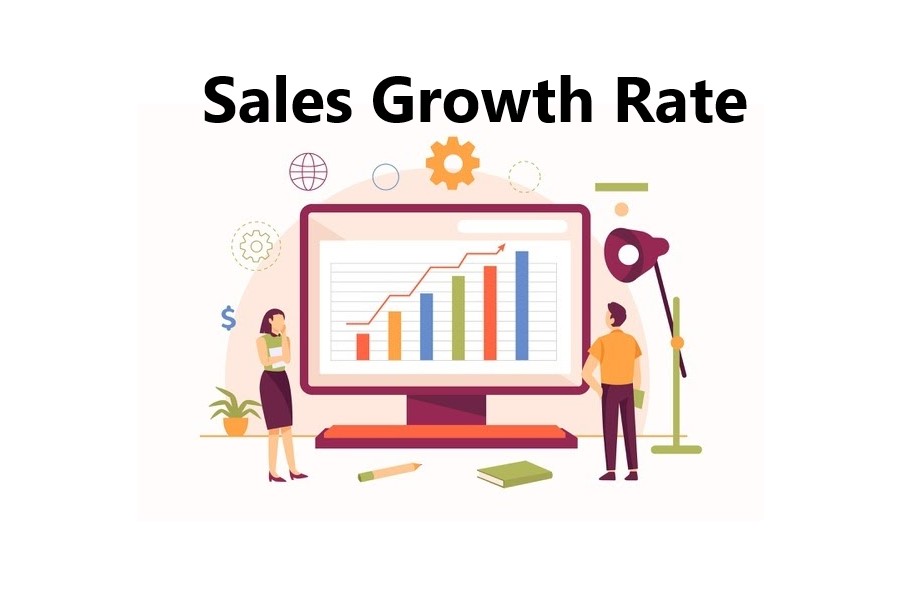
The Importance of Sales Growth Rate
The sales growth rate provides insight into a company’s overall health. A positive growth rate indicates that a company is on the right track, while a negative rate might signal challenges in the market or inefficiencies within the business. This metric is essential for determining how a company is performing compared to competitors and market trends. For instance, in 2021, Tesla’s impressive sales growth rate of 74% starkly contrasted with other companies like Amazon, which saw a 44% rate during the same period. Though both companies achieved positive growth, their industries and competitive landscapes demanded different sales targets and growth strategies.
A robust SGR is also crucial for attracting investors. Consistent and high growth rates signal that a company has a successful business model, making it more appealing to potential investors. Businesses with steady sales growth often receive higher valuations, making it easier for them to secure funding for expansion efforts.
How to Calculate Sales Growth Rate
Calculating the SGR is straightforward. The formula is:
Sales Growth Rate equals the difference between the current period’s sales and the previous period’s sales, divided by the previous period’s sales, multiplied by 100 to convert it to a percentage.
Sales Growth Rate = [(Current Period Sales – Previous Period Sales) / Previous Period Sales] * 100
For example, if a company made $1 million in sales this year compared to $800,000 last year, the sales growth rate would be:
Sales Growth Rate = [($1,000,000 – $800,000) / $800,000] * 100 = 25%
This calculation shows that the company’s sales grew by 25% over the past year. Monitoring this figure regularly helps businesses stay on top of their financial performance and make timely adjustments to their sales strategies.
Factors Influencing Sales Growth Rate
Several internal and external factors can impact a company’s sales growth rate. Changes in market demand, economic conditions, and consumer preferences play significant roles in determining a company’s ability to grow sales. For instance, during the COVID-19 pandemic, businesses operating in e-commerce experienced higher sales growth rates due to increased online shopping, while brick-and-mortar retailers saw slower or negative growth.
Competitor performance is another critical factor. A company may perform well within its niche, but if competitors are growing at a faster pace, the business risks losing market share. For example, eBay saw a 45% sales growth rate in 2021, which was considered strong until compared with Amazon’s 44%. Although their rates were nearly identical, industry expectations and direct competition painted different pictures for these companies.
Other factors influencing sales growth include product quality, customer satisfaction, and the effectiveness of the sales team. A motivated and well-trained sales team can significantly boost a company’s SGR. In contrast, customer dissatisfaction or poor sales strategies can hinder growth and lead to higher churn rates.
Strategies to Improve Sales Growth Rate
Businesses can adopt various strategies to improve their sales growth rate. One effective approach is expanding into new markets. By tapping into previously unexplored regions or customer segments, companies can increase their customer base and boost sales. For instance, many businesses found success in entering the Asian Pacific (APAC) market, aiming for rapid growth by adapting their products and services to local needs.
Improving customer service is another powerful tool for driving growth. By enhancing the overall customer experience, companies increase retention rates and create more opportunities for repeat sales. Satisfied customers are also more likely to recommend a brand to others, leading to organic growth.
Another way to stimulate sales growth is by offering new products or services. Expanding a company’s product line provides existing customers with more purchasing options and attracts new customers. This diversification strategy, combined with effective marketing campaigns, can lead to significant revenue growth.
Finally, businesses can optimize their pricing strategies to remain competitive. Conducting regular market analysis ensures that a company’s pricing aligns with customer expectations and competitor offerings. Adjusting prices to reflect the perceived value of products or services can increase sales while maintaining healthy profit margins.
Common Pitfalls
While aiming for higher sales growth, businesses can make several mistakes that hinder progress. One common pitfall is expanding too quickly without proper market research. Rapid growth can lead to operational inefficiencies and overextension, which negatively impacts sales and customer satisfaction. Companies should first saturate their existing markets before attempting to scale.
Another common mistake is neglecting customer retention. Focusing solely on acquiring new customers while ignoring existing ones can lead to a higher churn rate. Retaining loyal customers is often more cost-effective than attracting new ones, and it also contributes to long-term growth.
Lastly, businesses that fail to adapt to changing market conditions may struggle to maintain a healthy sales growth rate. Staying up-to-date with industry trends and consumer behavior is essential for sustaining growth.
Benchmarks
The ideal sales growth rate varies by industry, company size, and market conditions. For smaller companies, growth rates of 10% to 20% are typical, while larger, more established firms may target 5% to 10%. Startups often experience rapid sales growth in their early stages, which can slow as they mature. Tracking industry-specific benchmarks helps businesses set realistic goals and measure their performance against competitors.
Sales growth rate is a key indicator of a company’s financial success and its ability to compete in the market. By regularly monitoring this metric, businesses can make informed decisions to enhance their sales strategies and stay ahead of competitors. Whether through market expansion, product diversification, or customer service improvements, there are numerous ways to drive sales growth. However, it is crucial to avoid common pitfalls such as over-expansion and neglecting customer retention. By understanding the factors that influence sales growth and implementing effective strategies, companies can achieve sustainable growth and long-term success.

